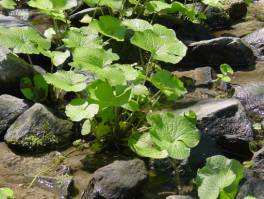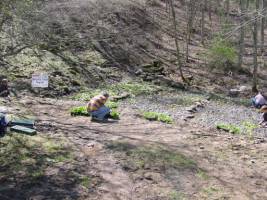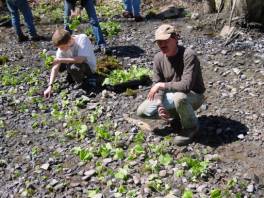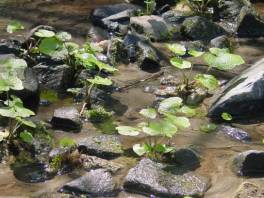Growing Wasabi in Western North Carolina-2002 Report
go.ncsu.edu/readext?454057
en Español / em Português
El inglés es el idioma de control de esta página. En la medida en que haya algún conflicto entre la traducción al inglés y la traducción, el inglés prevalece.
Al hacer clic en el enlace de traducción se activa un servicio de traducción gratuito para convertir la página al español. Al igual que con cualquier traducción por Internet, la conversión no es sensible al contexto y puede que no traduzca el texto en su significado original. NC State Extension no garantiza la exactitud del texto traducido. Por favor, tenga en cuenta que algunas aplicaciones y/o servicios pueden no funcionar como se espera cuando se traducen.
Português
Inglês é o idioma de controle desta página. Na medida que haja algum conflito entre o texto original em Inglês e a tradução, o Inglês prevalece.
Ao clicar no link de tradução, um serviço gratuito de tradução será ativado para converter a página para o Português. Como em qualquer tradução pela internet, a conversão não é sensivel ao contexto e pode não ocorrer a tradução para o significado orginal. O serviço de Extensão da Carolina do Norte (NC State Extension) não garante a exatidão do texto traduzido. Por favor, observe que algumas funções ou serviços podem não funcionar como esperado após a tradução.
English
English is the controlling language of this page. To the extent there is any conflict between the English text and the translation, English controls.
Clicking on the translation link activates a free translation service to convert the page to Spanish. As with any Internet translation, the conversion is not context-sensitive and may not translate the text to its original meaning. NC State Extension does not guarantee the accuracy of the translated text. Please note that some applications and/or services may not function as expected when translated.
Collapse ▲This is a 2002 report from a NC Specialty Crops Program Project. It is posted for historical reference purposes.
Reviewed by Jeanine Davis, NC Alternative Crops & Organics Program, Department of Horticultural Science, NC State University on 10/9/2022.
PROJECT LEADER(S): Randy Collins
TYPE OF PROJECT: Research
LOCATION: Graham County
IMPACT
Wasabi is a high-value specialty crop with consistently high demand in the Japanese catering and food industry. Research has been initiated to determine whether this crop is suited to production in western NC. Once best cultural practices, site requirements, and methods of disease control are established, it is hoped that wasabi can be introduced as a viable commodity in a region in need of new agricultural alternatives.
INTRODUCTION
Wasabi (Wasabia japonica) is an aquatic perennial plant that is highly prized for the culinary use of its root. The rhizome has a hot flavor similar to horseradish, and is eaten freshly grated or ground into a paste. Wasabi is commonly used in sushi restaurants worldwide; the antibacterial properties of the root make it an excellent condiment for raw fish. While the majority of the wasabi used in the United States is imported, the climate in certain areas of western North Carolina is remarkably similar to that of Japan, and likely suitable for the cultivation of this plant. Demand consistently exceeds supply for this crop, and restaurants are willing to pay top dollar for it (as much as fifteen dollars per fresh root). Given the established market and appropriate climate for growing this plant, wasabi is a potential niche cash crop for western NC. This project was designed to explore whether wasabi can in fact be grown as a viable agricultural commodity in this region. Initial research focuses on identifying best varieties and cultural practices.
RESULTS
The results from the first year of this ongoing project indicate that wasabi will in fact grow in the climate of western North Carolina. Unfortunately, about 80% of the planting was lost this season due to disease. Lab analysis of the plants indicated phytopthora rot in the roots, as well as rhizoctonia rot in the crowns. Disease was less prevalent in the more heavily shaded areas of the plot, suggesting that additional shade may alleviate some of the conditions that foster disease. Therefore, upon replanting in April of 2003, an artificial shade cover will be added to the site.
CONCLUSION
Additional research should at this point focus on suitable methods of disease prevention and treatment in wasabi. If these challenges can be addressed successfully, this high-value crop could have a place in North Carolina agriculture.
PHOTOS






